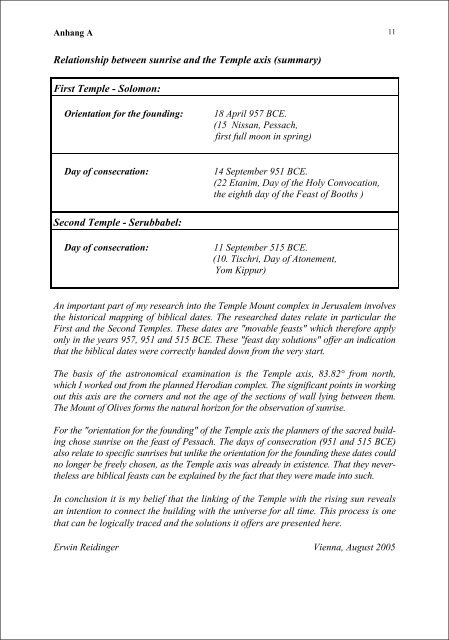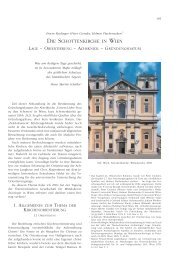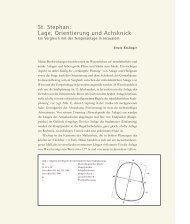Die Tempelanlage in Jerusalem von Salomo bis ... - Erwin Reidinger
Die Tempelanlage in Jerusalem von Salomo bis ... - Erwin Reidinger
Die Tempelanlage in Jerusalem von Salomo bis ... - Erwin Reidinger
Erfolgreiche ePaper selbst erstellen
Machen Sie aus Ihren PDF Publikationen ein blätterbares Flipbook mit unserer einzigartigen Google optimierten e-Paper Software.
Anhang A 11<br />
Relationship between sunrise and the Temple axis (summary)<br />
First Temple - Solomon:<br />
Orientation for the found<strong>in</strong>g:<br />
18 April 957 BCE.<br />
(15 Nissan, Pessach,<br />
first full moon <strong>in</strong> spr<strong>in</strong>g)<br />
Day of consecration:<br />
14 September 951 BCE.<br />
(22 Etanim, Day of the Holy Convocation,<br />
the eighth day of the Feast of Booths )<br />
Second Temple - Serubbabel:<br />
Day of consecration:<br />
11 September 515 BCE.<br />
(10. Tischri, Day of Atonement,<br />
Yom Kippur)<br />
An important part of my research <strong>in</strong>to the Temple Mount complex <strong>in</strong> <strong>Jerusalem</strong> <strong>in</strong>volves<br />
the historical mapp<strong>in</strong>g of biblical dates. The researched dates relate <strong>in</strong> particular the<br />
First and the Second Temples. These dates are "movable feasts" which therefore apply<br />
only <strong>in</strong> the years 957, 951 and 515 BCE. These "feast day solutions" offer an <strong>in</strong>dication<br />
that the biblical dates were correctly handed down from the very start.<br />
The basis of the astronomical exam<strong>in</strong>ation is the Temple axis, 83.82° from north,<br />
which I worked out from the planned Herodian complex. The significant po<strong>in</strong>ts <strong>in</strong> work<strong>in</strong>g<br />
out this axis are the corners and not the age of the sections of wall ly<strong>in</strong>g between them.<br />
The Mount of Olives forms the natural horizon for the observation of sunrise.<br />
For the "orientation for the found<strong>in</strong>g" of the Temple axis the planners of the sacred build<strong>in</strong>g<br />
chose sunrise on the feast of Pessach. The days of consecration (951 and 515 BCE)<br />
also relate to specific sunrises but unlike the orientation for the found<strong>in</strong>g these dates could<br />
no longer be freely chosen, as the Temple axis was already <strong>in</strong> existence. That they nevertheless<br />
are biblical feasts can be expla<strong>in</strong>ed by the fact that they were made <strong>in</strong>to such.<br />
In conclusion it is my belief that the l<strong>in</strong>k<strong>in</strong>g of the Temple with the ris<strong>in</strong>g sun reveals<br />
an <strong>in</strong>tention to connect the build<strong>in</strong>g with the universe for all time. This process is one<br />
that can be logically traced and the solutions it offers are presented here.<br />
Erw<strong>in</strong> Reid<strong>in</strong>ger Vienna, August 2005









